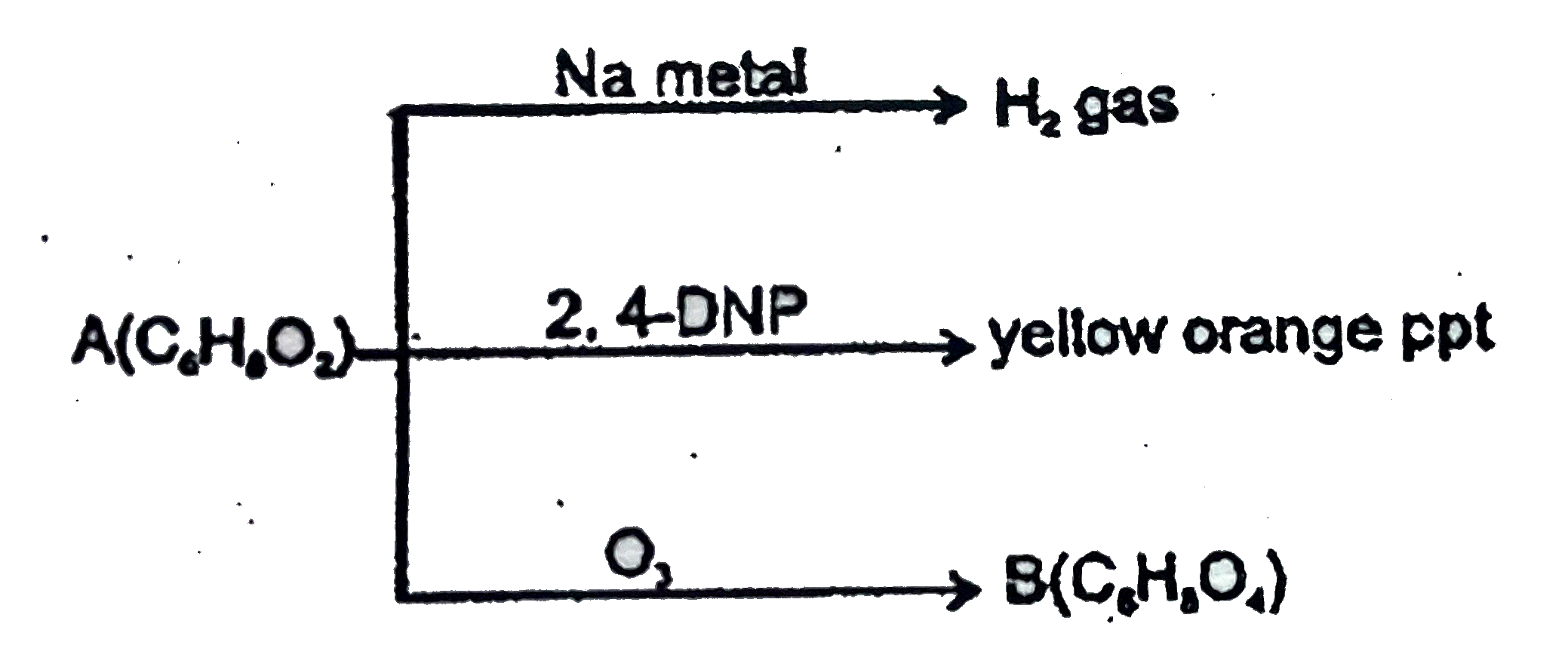An inorganic compound (A) loses its water of crystallisation on heating and its aqueous solution gives the following reactions:
a. It gives a white turbidity with dil HCI.
b. It decolourises a solution of iodine in KI.
To solve the problem step-by-step, we need to analyze the information given about the inorganic compound (A) and the reactions it undergoes.
Step 1: Identify the nature of compound (A)
The problem states that compound (A) loses its water of crystallization upon heating. This suggests that it is a hydrated salt.
Hint: Look for common hydrated salts that are known to lose water when heated.
Step 2: Analyze the first reaction with dilute HCl
The first reaction states that the aqueous solution of (A) gives a white turbidity with dilute HCl. This turbidity typically indicates the formation of a precipitate, which could be sulfur.
Hint: Consider compounds that produce sulfur when reacted with dilute HCl.
Step 3: Analyze the second reaction with iodine in KI
The second reaction indicates that the aqueous solution of (A) decolorizes a solution of iodine in KI. This suggests that compound (A) contains thiosulfate ions, as thiosulfate ions can reduce iodine to iodide ions.
Hint: Recall the chemical behavior of thiosulfate ions in redox reactions.
Step 4: Propose a candidate for compound (A)
Based on the analysis, we can propose that compound (A) is sodium thiosulfate, which has the formula Na2S2O3. It is a common compound that fits the criteria of losing water of crystallization and reacting with HCl to produce sulfur.
Hint: Check the chemical formula and properties of sodium thiosulfate to confirm it fits the reactions described.
Step 5: Write the equations for the reactions
1. For the reaction with dilute HCl:
Na2S2O3⋅5H2O+2HCl→2NaCl+H2O+SO2+S↓
(The sulfur precipitates out, causing the white turbidity.)
2. For the reaction with iodine in KI:
Na2S2O3+I2→Na2S4O6+2NaI
(This reaction shows the decolorization of iodine.)
Conclusion
Thus, the required compound (A) is sodium thiosulfate, Na2S2O3·5H2O.
Final Answer: Sodium thiosulfate (Na2S2O3·5H2O)
The problem states that compound (A) loses its water of crystallization upon heating. This suggests that it is a hydrated salt.
The first reaction states that the aqueous solution of (A) gives a white turbidity with dilute HCl. This turbidity typically indicates the formation of a precipitate, which could be sulfur.
The second reaction indicates that the aqueous solution of (A) decolorizes a solution of iodine in KI. This suggests that compound (A) contains thiosulfate ions, as thiosulfate ions can reduce iodine to iodide ions.
Based on the analysis, we can propose that compound (A) is sodium thiosulfate, which has the formula Na2S2O3. It is a common compound that fits the criteria of losing water of crystallization and reacting with HCl to produce sulfur.
1. For the reaction with dilute HCl:
Na2S2O3⋅5H2O+2HCl→2NaCl+H2O+SO2+S↓
(The sulfur precipitates out, causing the white turbidity.)
Na2S2O3+I2→Na2S4O6+2NaI
(This reaction shows the decolorization of iodine.)
Thus, the required compound (A) is sodium thiosulfate, Na2S2O3·5H2O.
Topper's Solved these Questions
- S-BLOCK GROUP 1 - ALKALI METALSBOOK - CENGAGE CHEMISTRY ENGLISHCHAPTER - S-BLOCK GROUP 1 - ALKALI METALSEXERCISE - Ex 4.1 (Subjective)
24 Videos
- S-BLOCK GROUP 1 - ALKALI METALSBOOK - CENGAGE CHEMISTRY ENGLISHCHAPTER - S-BLOCK GROUP 1 - ALKALI METALSEXERCISE - Ex 4.1 (True/False)
1 Videos
- S-BLOCK GROUP 1 - ALKALI METALSBOOK - CENGAGE CHEMISTRY ENGLISHCHAPTER - S-BLOCK GROUP 1 - ALKALI METALSEXERCISE - Archives Subjective
8 Videos
- REDOX REACTIONSBOOK - CENGAGE CHEMISTRY ENGLISHCHAPTER - REDOX REACTIONSEXERCISE - Archives (Integers)
1 Videos
- S-BLOCK GROUP 2 - ALKALINE EARTH METALSBOOK - CENGAGE CHEMISTRY ENGLISHCHAPTER - S-BLOCK GROUP 2 - ALKALINE EARTH METALSEXERCISE - Ex 5.1 Objective
2 Videos
Similar Questions
An unknown inorganic compound (X) loses it water of crystallisation on heating and its aqueous solution gives the following reaction.
(i) It gives a white turbidity with dilute hydrochloric acid solution.
(ii) It decolourises a solution of iodine in potassium iodide.
(iii) It gives a white precipitate with silver nitrate solution which turns black on standing. Identify the compound (X) and give chemical equations for the reaction at step (i) to (iii).
View SolutionA compound A gives following reactions.

Its structure can be
View SolutionWhich of the following compound gives yellowish white turbidity with dil. H2SO4?
View SolutionAqueous hypo solution on reaction with aqueous AgNO3 gives :
View SolutionA mixture of formaldehyde and benzaldehyde on heating with aqueous NaOH solution gives :
View SolutionA certain compound (A) is used in the laboratory for analysis, its aqueous solution gives the following reactions:
a. On addition to copper sulphate, a brown precipitate is obtained which turns white on addition of excess of the Na2S2O3 solution.
b. On addition to the Ag⊕ ion solution, a yellow curdy precipitate is obtained which is insoluble in ammonium hydroxide. Identify (A) and give equations for the reactions at steps (a) and (b).
View SolutionA certain compound (A) is used in the laboratory for analysis, its aqueous solution gives the following reactions:
a. On addition to copper sulphate, a brown precipitate is obtained which turns white on addition of excess of the Na2S2O3 solution.
b. On addition to the Ag⊕ ion solution, a yellow curdy precipitate is obtained which is insoluble in ammonium hydroxide. Identify (A) and give equations for the reactions at steps (a) and (b).
View SolutionA mixture of benzaldehyde and formaldehyde on heating with aqueous NaOH solution gives
View SolutionA white crystalline compound (X) swells open heating and gives violet-coloured flame. Its aqueous solution gives the following reactions :
(a) A white precipitate is formed, with BaCl2 in presence of HCl.
(b) When treated with excess of NH4OH, it gives white gelatinous precipitate. the white precipitate dissolves in NaOH and reappears on boiling with concentrated solution of NH4Cl.
( c) It gives yellow precipitate with cobaltinitrite solution. Identify (X) and explain the reaction at steps a,b and c.
View SolutionHeating an aqueous solution of aluminium chloride to dryness will give
View Solution
